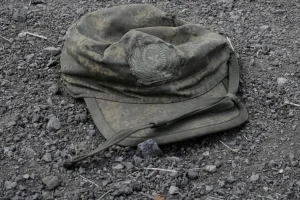
Russian officers resist most in Kursk region - Nachtigall Battalion
Vasyl Halamai, platoon commander with the 3rd Nachtigall Battalion, says that Russian officers are putting up the most resistance in the Kursk region to avoid surrendering
He said this on Espreso TV.
"Our unit has not taken prisoners in the course of its activities so far. However, other units of the Defense Forces take prisoners in the Kursk region, who belong to different categories. Our guys also take officers of the Russian Armed Forces prisoner. It is worth noting that if there are conscripts with the officers, they put up perhaps the greatest resistance. Also, many prisoners are representatives of the Chechen Republic. We talk a lot with the guys who took Russian prisoners in the Kursk region. According to them, there are even captured representatives of the FSB," Halamai said.
The serviceman emphasized that the Russian resistance has significantly increased in the Kursk region.
"It is true that the Russians are using more guided bombs here than in the area of the frontline in the Donetsk region where our battalion was located. However, as it turned out, this is not a very large number over a certain period of time. It is also worth noting that only recently the Russians have started using FPV drones in the battles in the Kursk region. They are also significantly increasing artillery fire and the resistance of infantry units has increased," he added.
Ukraine’s cross-border incursion in Russia’s Kursk region
On August 6, the authorities of Russia's Kursk region stated that the Ukrainian Armed Forces allegedly tried to break through the Russian border, but were pushed back. Later, the Russian Defense Ministry reported that "the Ukrainian sabotage and reconnaissance group retreated to its territory.”
On August 7, Kremlin leader Vladimir Putin convened the Russian military leadership to discuss the situation in the Kursk region, which he called a "large-scale provocation." At the time, Russian Foreign Ministry spokeswoman Maria Zakharova called on the international community to "strongly condemn the Kyiv regime's criminal attacks on Russian territory."
On August 10, President Zelenskyy called the operation in the Kursk region “pushing the war into the aggressor's territory.” At night of the same day, the authorities introduced a counterterrorism operation in the Bryansk, Kursk, and Belgorod regions of Russia.
On August 14, it became known that the Ukrainian military had formed a “sanitary (buffer) zone” for self-defense in the Kursk region of Russia. It is planned to open humanitarian corridors for the evacuation of civilians, and if necessary, military commandant's offices will be established in the Russian region.
At a meeting with the president on August 15, Ukrainian Armed Forces Commander-in-Chief Oleksandr Syrskyi said that Ukraine had established the first military commandant's office in the Kursk region to provide humanitarian aid to local residents.
At the same time, Ukraine's Ministry of Reintegration of the Temporarily Occupied Territories, together with the military, is currently working on a possible route for a humanitarian corridor for civilians from Kursk to Sumy.
On August 15, The Independent reported that about 2,000 Russian servicemen were captured during an operation by the Ukrainian Armed Forces in the Kursk region.
Soldiers of the 80th Separate Air Assault Galician Brigade of the Airborne Forces of Ukrainian Armed Forces told about the results of their work after the first hours of the military operation in the Russian Kursk region.
Ukrainian forces keep conducting operations in the Kursk region. As of August 19, the Ukrainian Armed Forces took control of 92 settlements.
On August 20, Russian dictator Vladimir Putin ordered the military to push Ukrainian forces out of the Kursk region by October 1, 2024.
On August 20, Commander-in-Chief of the Armed Forces Oleksandr Syrskyi said that the Ukrainian military controlled 1,263 square kilometers in the Kursk region, including 93 settlements.
- News












































